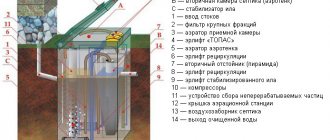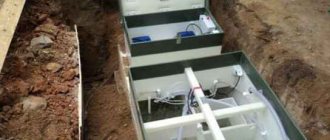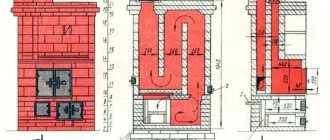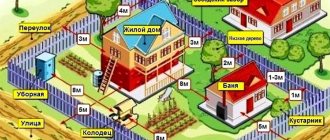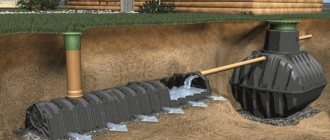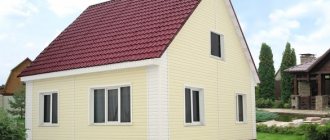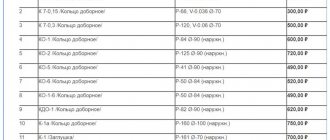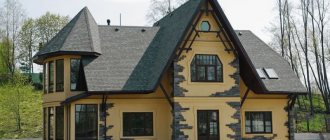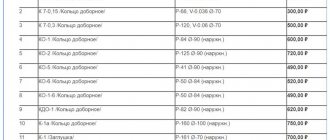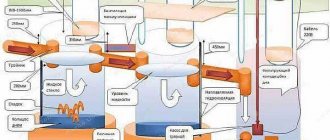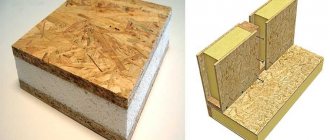Design and principle of operation of Topas septic tanks
Wastewater treatment in Topas occurs thanks to aerobic bacteria, which eat all organic matter entering the station. At the same time, ideal conditions have been created inside the septic tank for their life and rapid reproduction. Topas station is divided into four chambers:
- Receiving chamber (PC);
- Aerotank chamber (aerotank);
- Secondary sedimentation tank (SS);
- Sludge stabilizer (SI).
Reception chamber
- This is a reservoir where wastewater from the house goes. In it, water is averaged according to temperature and chemical readings, and then through a coarse fraction filter and through the main airlift it is sent to the aeration tank.
In the aeration tank
basic biological processes occur. A fine-bubble aeration element is provided here, with the help of which the water is saturated with oxygen. Aerobic bacteria, receiving oxygen, multiply and actively eat organic matter.
Secondary settling tank
- small swelling, similar to an inverted truncated pyramid. It is connected to the aeration tank chamber according to the principle of communicating vessels. Purified water enters the secondary settling tank through the recirculation airlift and by gravity through the bottom of the compartment. Then it is sent to the exit through the 110th pipe or to the pump compartment, from where it is forced out.
In the sludge collector
the waste sludge sinks to the bottom of the septic tank, and the activated sludge and water flow by gravity back into the PC.
The flow in Topas alternately moves in direct and then in reverse phase:
1) When the receiving chamber is filled with drainage, the installation begins to operate in the forward phase
. In this case, compressed air is supplied to the main airlift, which pumps water from the homogenizer into the aeration tank. There, the wastewater is saturated with oxygen using fine-bubble aeration, purified, and then sent to a secondary settling tank and exits the station.
2) In reverse phase
compressed air enters the airlift of the aeration tank. The runoff from the aeration tank flows into the sludge stabilizer, and then by gravity back into the receiving chamber.
Air is supplied to all airlifts and aeration elements using compressors. Topas has two of them, and the Topas S series has one. Phase switching in Topas S occurs thanks to an electromagnetic valve.
Pit for a septic tank Topas
- When installing a Topas septic tank, there is one very important feature: when digging a pit, you need to ensure that its bottom is level, which will allow the installation to rest on material soil;
- Another feature regarding the bottom of the pit is related to the fact that there (at the bottom) there should be a mound of sand, 8-10 cm thick. It is important to ensure that there are no hard objects in the sand: gravel, crushed stone, etc. For larger installations with a capacity of 4 cubic meters. m per day and it is no longer necessary to backfill with sand. Moreover, such installations must be installed on the surface of a reinforced concrete platform;
- If you suddenly dug a pit, the dimensions of which exceeded the required values, then leveling the bottom should be done using a mound of sand with periodic spilling of water;
- The walls of any installation must be sprinkled with sand, the required thickness of which is 25 cm or more;
- After the installation is lowered into the pit, it must be immediately filled with water to the level of the overflow holes, and it must be sprinkled with sand;
- Do not forget to use a level when installing the unit, since its tilt is unacceptable;
- If you have provided for and created a drainage system, then it is best to discharge purified water leaving the installation into it, as well as remove products from filters that perform iron removal and softening;
- The slope of each sewer line must be in the range from 2 to 5%, and there are also requirements for the width of the trench: it should be 0.4-0.5 m. If the sewer system is long, then every 10-15 m it is necessary install an inspection well;
- Purified water is never discharged into clay soils. In such situations, it is necessary to create a filter field;
- If you decide to discharge water into a storm drain, we recommend using a forced discharge system, while setting the pipe slope in the opposite direction (toward the pump).
Features of installation are that before starting installation you need to make markings and take into account the thickness of the sand coating.
Operating instructions for Topas septic tanks
Now that you have learned how water is purified in the station, it will be easier for you to understand how to use it correctly. Most of the operating instructions are aimed at making the bacteria in the septic tank feel good and do their job. Also, do not allow the Topas septic tank to become clogged. Some of the instructions should be followed not only when using SWS, but also when using city sewerage.
- The Topas septic tank must always be connected to the network. Without this, compressors will not work and supply air to airlifts and aerators. If there is a power outage, the installation can stand without electricity for about six hours. However, it cannot be used as there may be a risk of flooding.
- When using a Topas septic tank, do not flush chlorine-containing preparations down the drain. They are usually found in some earthenware products, clothing bleaches, and dishwasher tablets. Carefully monitor what household chemicals you buy and replace chlorine-containing products with chlorine-free analogues. Shower gels, soaps and shampoos are completely safe for bacteria.
- You also cannot throw non-degradable items into the Topas station: cigarette butts, feminine hygiene products, condoms, wet wipes, candy wrappers, and so on. They can clog airlifts or filters and create an emergency situation.
- Non-degradable items also include animal fur and hair. It is difficult to completely eliminate their entry into the sewer system, but it can be reduced to a minimum. For example, if you do not flush water down the toilet after washing the floors, but install strainers in the sink and shower.
- Also, when operating a Topas septic tank, you must not flush water into the sewer after washing the mushrooms. Fungal spores quickly multiply on the activated sludge, and the plant begins to smell unpleasant.
Read more in our video “What can’t be dumped into a Topas septic tank? Is a power outage dangerous for a septic tank?
If you follow all these simple instructions, then you will not have any problems with the Topas station. The output water will be clean, odorless, and can be used for watering non-fertile plants. If the water coming out is cloudy
, then there may be several reasons for this:
- The installation produces insufficient sludge. This can happen in the first weeks of using the station immediately after installation or re-opening.
- Chemical pollution due to the use of chlorine-containing products.
- The station is overloaded or the salvo discharge is exceeded.
Installation of Topas septic tank
- If there is a standard design of the installations, then their height is approximately 2.3 m, which makes it possible to use such installations with a depth of up to 80 cm of the supply pipe responsible for the sewerage. This distance is determined from the surface of the earth to the bottom edge of the pipe. If the depth of the pipe exceeds 80 cm, then it is preferable to use other modifications of Topas septic tanks:
- standard , which is characterized by a height of 2.5 m. Moreover, the use of this installation is justified when the depth of the sewer pipe is in the range from 60 to 90 cm.
Long (extended) - with this type the height is 3 m. The depth of the supply pipe, characteristic for this case, is located in the range from 90 to 120 cm.
- Ус long (reinforced extended) – custom-made installation. The use of this installation is typical when the supply pipe is deepened to more than 120 cm. In this case, it is important that the installation capacity must be at least 3 cubic meters. m. per day.
- When installing the outlet pipe of the D110 septic tank, it is recommended to cut it in and weld it or use a special cuff, which will serve for high-quality sealing. The priority in this case is the weld, since with its help it is possible to achieve the greatest strength and better sealing;
- In cases where the facility contains disinfection and softening filters, it is necessary to create a separate drainage system that will pass by the Topas Aeration Stations. This is explained by the fact that the regeneration products of the above-mentioned filters are strictly prohibited from being discharged into installations, since their operation may be disrupted;
- There are special requirements for covers installed on installations: together with hinges, they must be mounted in such a way that their location is 150-200 mm above ground level;
- There is a compressor inside the unit. It is necessary to ensure that the housing cover is always tightly closed, and the hinges on which it is attached must be cleared of soil. It is also necessary to ensure a continuous supply of fresh air to the air intake.
- It is unacceptable to place the cover below ground level;
- Exhaust air must exit through the vent riser (supply sewer system, which is provided with ventilation);
- The fan riser must be installed on the roof of the building. In this case, it is strictly forbidden to combine ventilation and sewer riser shafts;
- The reason for the appearance of an unpleasant sewer smell in the house is the incorrect installation of the drain riser, so this issue should be treated with special attention;
- Practice has shown that the installations with a height of 2.36 and 2.5 m are the easiest to maintain. Therefore, it is recommended to consider all possible options for changing the depth of the sewer pipe leaving the house before deciding to use the “Long” installation;
- In cases where the basement of the house contains a bathroom, and the level of the pan, drain or toilet is lower than the maximum water level in the existing installation, the use of a gravity sewer is prohibited, since the discharge will not be carried out properly.
In all three cases, the depth of burial is calculated from the ground level of the lowest point of the pipe;
Instructions for using Topas station in winter
During operation, the Topas septic tank generates heat, so the device does not experience any difficulties in winter. In addition, the lid is thermally insulated and does not allow cold air to pass through. Additional insulation may be needed only in severe frosts - or more precisely at -20 ° C and below. If the temperature outside has dropped to -15 °C, then you should not open the station lid. In this case, it is better to postpone septic tank maintenance to a warmer period.
If in winter you do not live in a country house or dacha, but plan to visit it 2-3 times (for example, during the New Year holidays), then you should not disconnect the station from the network. Topas septic tanks are designed in such a way that the vital activity of bacteria is maintained in them, even if no new wastewater enters the installation. At the same time, the amount of electricity consumed by the septic tank is small - 56 W per hour. In terms of money, you will run up about 150-200 rubles per month (depending on the region).
However, if you are sure that you will not visit the dacha in winter, then Topas station can be mothballed before leaving.
Key points for structural maintenance
The service life of the Topas system is more than ten years. But the key to the smooth operation of a structure is its proper maintenance. The operating requirements for any type of treatment plant are the same.
From the moment the septic tank is launched, it takes about three weeks to form an active biomass; to speed up the process, ready-made river sludge can be placed in the chamber
When operating such a treatment system, it is allowed if the wastewater contains residues of gentle detergents and phosphate-free washing powders. The presence of toilet paper residues in wastewater will not cause any particular harm.
When servicing a Topas septic tank, it should be taken into account that it is strictly forbidden to dump into it:
- Spoiled vegetables and fruits.
- Remains of building materials, including sand.
- Detergents with a high content of chlorine.
- Automotive consumables.
- Residues of medicinal preparations.
- Rubber, film and other synthetic compounds that are not biodegradable.
It is also not recommended to discharge water that has been purified using an oxidizer into a septic tank. If the operating rules are repeatedly violated, breakdowns are possible and then repair of the Topas septic tank will be required.
To avoid troubles, in addition to proper operation, it is necessary to regularly perform maintenance activities on the treatment plant. So, once a month it is necessary to clean the coarse filter. Once a quarter, remove waste sludge from the stabilizer. Replace the membrane annually.
Comprehensive preventive cleaning of the bottom and walls of the structure from silt sediment should be carried out every three to four years.
The accumulated stabilized sludge is pumped out from the fourth chamber with drainage sediment, it is used as a starting material for making compost or for direct fertilization of garden beds
A complete general cleaning of the septic tank, including checking the float mechanism and replacing the aerator, is performed once every ten years.
Maintenance activities for the Topas septic tank in winter have their own characteristics. We examined them in detail in this article.
Instructions for preserving a Topas septic tank
Before conservation, the wastewater in the station must be clarified
. To do this, 40% of the drainage is alternately pumped out of the septic tank chambers, and clean water is poured in instead. The procedure is repeated several times until the water becomes clear. The sequence of lighting the cameras is strict:
Sludge collector ––> aeration tank ––> receiving chamber
You do not need to fill in clean water completely, but somewhere 40 cm below the working level. The figure may vary depending on the depth of soil freezing in your area.
Then floats are added to the water
. They are made from liter plastic bottles with sand poured into the bottom. 1-2 bottles are lowered into each chamber. At the same time, it is better to tie them with ropes to the station so that they definitely do not drown. In winter, during severe frosts, if the top layer of water freezes, the bottles will take on excess pressure and the station will not be damaged.
The station is disconnected from the power grid
. And the compressors and pump are removed from the septic tank and taken to a warm room.
The septic tank lid is insulated with penoplex
.
During spring re-opening it is necessary:
- remove the insulation from the lid,
- make sure the body is intact,
- return the compressors and pump to their place,
- connect them according to the manufacturer's instructions,
- Fill the septic tank with clean water to the operating level (if necessary),
- connect the station to the network,
- check the operation of airlifts,
- check the operation of the float switch by switching modes,
- check the alarm system.
For some time after re-opening, the drainage at the outlet of the septic tank may be cloudy. The station will reach its maximum cleaning level in a couple of weeks.
Measures for operating a septic tank in winter
The septic tank is designed for wastewater treatment in winter. The cover of the unit is specially insulated. If the outside temperature is not lower than -20 degrees, at least 20% of the wastewater flows in, the installation does not require additional measures. And if the temperature is below -20, the upper part of the installation must be insulated.
When the temperature drops to -15 degrees, it is better not to open the hatch unless absolutely necessary. Preservation and re-preservation of the installation must be carried out according to the instructions and recorded in the installation passport.
Preservation of the septic tank
Conservation provides for such procedures. Gradually, in several stages, pump out the contents and clean water no more than 40% percent from each chamber. Pump until the water is completely clear. If the groundwater level is high, the empty chamber may float. There is no need to let it be devastated. After pumping out, rinse the installation, clean the pumps, nozzles and air lifts. Disconnect the installation from electricity, remove the compressors, and from the forced model - the pump. In winter, insulate the lid.
Important! Do not pump out the contents of the chambers at the same time; this may lead to the installation being squeezed out of the ground.
How to pump out. Pump out the contents of the chambers and fill them with clean water to 1,800 mm from the bottom. Pump out in the following sequence: sludge stabilizer settling chamber, aeration tank chamber, receiving chamber. If the installation remains turned on for the winter, maintenance must be carried out according to the instructions (once every three months).
Electricity requirement
The power supply to the TOPAS WWTP must be connected only through a special distribution board to a separate switch (information is in the instruction table). It is strictly forbidden to connect the unit to a regular outlet or together with other electricity consumers. Appendix No. 3 contains connection diagrams.
WWTP "TOPAS" can operate normally with voltage fluctuations of 5% in one direction or the other. If the electricity goes out for no more than 4 hours, the TOPAS WWTP works normally. If the electricity is turned off for a long time, due to lack of air supply, anaerobic processes begin inside the installation. As a result, an unpleasant odor appears and the installation may overflow; in addition to the installation, the sewer leading to it also overflows.
If possible, the installation can be connected to an uninterruptible power supply unit. During a power outage, you need to reduce the amount of drainage.
The septic tank operates at a voltage of 220 V. To prevent voltage fluctuations from interfering with the operation of the installation, it is better to install a voltage stabilizer.
Three possible malfunctions of the Topas septic tank
1) Clogging of the main airlift. In this case, the receiving chamber overflows, and the drain enters other compartments by gravity through the walls. At the same time, the quality of cleaning drops sharply. If this happens, the sewer system must be stopped immediately and the problem must be corrected.
2) The float is broken. If the float breaks down, the station stops switching modes. This leads to overfilling of the septic tank and poor drainage treatment.
3) The most dangerous problem is a breakdown of the pump in forced stations. Then the purified water is not removed from the station, the station overflows and there is a risk of flooding of the compressor unit. Losses will amount to 30 thousand rubles. Installing an alarm system will help avoid this.
The alarm system comes as a gift with installation.
The very first sign that something is wrong with your station is the smell. An unpleasant odor appears if the septic tank has not been serviced for a long time, chemicals have been poured into it, the compressor has broken down, or the station is stuck in the direct phase.
Call a specialist to service the Topas septic tank
If you already have a Topas septic tank and you want to service it and check that the station is working correctly, call. Our specialist will come to your site, take samples of the drain if necessary, evaluate the quality of the device and clean it.
If you are just thinking about purchasing Topas, then here are several reasons to buy it from us:
- We provide interest-free installments for 6 months on all equipment and installation
- We draw up a detailed estimate of materials and installation work. About 20 points, not 3-4, like other installation organizations.
- We deliver all materials specified in the estimate to the site on the day of installation using our own vehicles.
- We install the Topas station in one working day.
- We control the quality of installation using photo reports and on-site technical supervision.
- We give feedback.
- We provide a manufacturer's warranty on the equipment and our own installation warranty for a period of 5 years.
- For regular service in our company, we give a discount on the service.
Recommended products
Using Topas during the cold season
The septic tank system is equipped with thermal insulation materials, so the principle of its operation remains unchanged during the cold season. At temperatures down to – 15°C, you don’t have to worry about the operation of the Topas station. If the temperature drops below, then owners are not recommended to open the technological doors unless there is an urgent need for it. In very severe frosts (-20°C and below), the station needs to be preserved. You can carry out the procedure yourself, but it is better to contact specialists.
Preservation stages:
- You should not completely drain the water from the system, because in the spring you will see a floating tank, and it will need to be installed again.
- After pumping out the dirty water, you need to clean the containers and fill them 3/4 full with clean water.
- Nozzles, pumps, airlifts also need cleaning.
- Disconnect Topas from the power supply system.
- Disconnect the compressors and pump.
- Insulate the station cover from the outside, but leave air flow to the ventilation hole.
- When spring comes, first connect the compressors and pump, and then turn on the power. The station will return to normal operation in a few days.
Useful tips for repairing the Topas septic tank
Reasons for the need for repairs:
- Due to untimely or irregular maintenance, an unpleasant odor or dirty water may appear. To eliminate this, it is necessary to flush the entire system.
- If the wiring is damaged, the compressor or sensor may short out. A complete rewiring is required.
- If water leaks out of the septic tank or comes into it, and you are not currently using it, then you need to check the plumbing. There may be a blockage in the drain pipe or the presence of flood water. Or the case is damaged. Repair the plumbing, unclog the blockages, pump out the water and get the help of a specialist.
- If the septic tank floods, check the operation of the drainage pump. It must be disconnected and checked separately. In most cases a new pump is needed.
- When the emergency sensor is triggered, there may be problems with the airlift, or the sensor itself may be broken. It must be replaced and a specialist must be invited to check the operation of the station.
operation and maintenance of a Topas type septic tank
Negative qualities of the Topas septic tank
Like any system, the Topas septic tank wastewater treatment station has its drawbacks:
- If there is a power failure, it is impossible to use the station, since frequent outages lead to breakdown of the entire system.
- The cost of a Topas septic tank is several times higher than the price for similar autonomous sewer systems.
- Dependence on regular maintenance, otherwise the compressor and pump will clog or fail, the repair of which will lead to additional costs.
- The appearance of an unpleasant odor during operation or the release of dirty water through the top. This occurs due to improper station maintenance.
An autonomous sewer system is a complex device that can fail at any time. At the same time, urgent repairs are necessary, because we cannot imagine a normal life without sewerage. Repairing septic tanks on your own is a difficult task, so if the station breaks down, immediately contact specialists who have extensive experience and special equipment.
Owners of Topas septic tanks note that the system meets the standards and requirements for wastewater treatment, operates silently, the body is made of environmentally friendly polypropylene material, process water and waste sludge are successfully used for watering and fertilizing the garden. In addition, the Topas installation allows you to save on the services of vacuum cleaners. Despite the high price, this is a high-quality and reliable purchase. After installing the station, it can be decorated using a decorative hatch in the form of a stone. It is made of plastic, which is reliable, and its shape will allow installation on any site.
By purchasing an autonomous sewer system septic tank "Topas", you care not only about your comfort, but also do not harm the environment.
